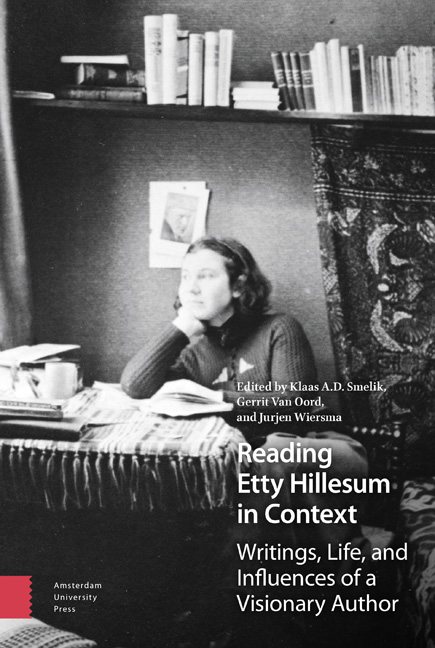3 - Hineinhorchen and Writing: The Language use of Etty Hillesum
Published online by Cambridge University Press: 06 January 2021
Summary
Abstract
An extensive study is needed in order to describe the language use of Etty Hillesum in all its detail. Nevertheless, this article provides a substantial introduction to Hillesum's original and unique style. Based on a study of quotations from the diaries, the author concludes that Etty Hillesum's writing is rich in figurative language, includes metaphors and metonyms, and is replete with subtle humour and irony.
Keywords: style, figurative language, rhetoric, metaphor, irony, inner dialogue, grotesque, Etty Hillesum
The language use of Etty Hillesum is rich in figurative language, includes metaphors and metonyms, subtle humour and irony, and is characterized by an original and unique style.
Introduction
Etty Hillesum started writing her diary on 8 March 1941. From that date until 13 October 1942, she filled eleven journals, ten of which have been preserved, amounting to more than 1,200 handwritten pages. In these journals, she often mentions that she would like to become a writer in her later life. She struggles with language, with words. She regularly has the opinion that she is not able to express herself. For a long time, she has had the idea that she wants to become a writer, but she fears her efforts in this respect will not be outstanding: “And if, at the end of a long life, I am able to give some form to the chaos inside me, I may well have fulfilled my own small purpose.”
Etty Hillesum makes countless observations about not being able to write and frequently she trivializes her talent for writing: “I still can't write. I want to write about the reality behind things, and that's still beyond my knowledge.” She remarks: “there are still no words to shelter me,” and denounces the pages in her journal as “awkward stammering.” She states: “I can only find distorted images to describe it. Later, I shall no doubt find the right brushstrokes; later, when I really get down to writing.” Meanwhile, she undergoes a huge transformation as she writes and struggles. Etty Hillesum develops from a person with many physical and mental issues to a strong and powerful woman who has learned how to cope with the problems she faces, a woman with implicit trust in life.
- Type
- Chapter
- Information
- Reading Etty Hillesum in ContextWritings, Life, and Influences of a Visionary Author, pp. 51 - 78Publisher: Amsterdam University PressPrint publication year: 2018



